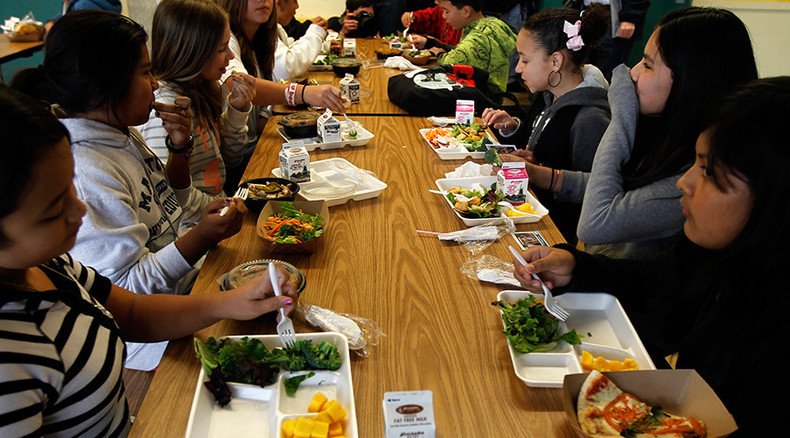US kids don’t eat veggies despite law

US kids, encouraged to consume more fruits and vegetables through a questionable program, merely throw them away, a new study on meals and dietary guidelines in schools revealed, as Congress moves towards a vote on the subject.
The new paper published in Public Health Reports says that the Healthy Hunger-Free Kids Act of 2010 has failed to make children eat more fruits and vegetables. More importantly, when children are forced to take the healthy food it gets dumped in the trash more often. The data comes just before Congress will decide whether to reapprove the project designed to bring healthier food choices to students’ plates.
The National School Lunch Program was introduced by the US Department of Agriculture (USDA) and was intended to increase the amount of healthy food consumed by kids by making the addition of fruit and vegetables to school lunch menus mandatory. However, as soon as the program was launched, suspicions arose that a large proportion of this healthy food was being thrown away.
.@USDA_ARS Pack an apple in your lunch box – A small apple has more than 2 grams of fiber. #HealthierNextGenpic.twitter.com/zAczZ6XKPP
— USDA-ARS Information (@USDA_ARS) August 26, 2015A group of scientists from the University of Vermont in Burlington and the University of California initiated the study. They visited 10 schools and observed almost 500 lunch trays before the program came into effect. A year later, they visited 11 schools and observed almost 1,000 trays. They took digital photos of lunch trays before and after lunch and then simply compared the shots. This is a new, faster way of quantifying how much food has been consumed and how much has been thrown away than simply weighing food waste.
“The beauty of this method is that you have the data to store and code to indicate what was selected, what was consumed, and what was wasted, as opposed to weighed plate waste, where everything needs to be done on site,” said Sarah A. Amin, the head of the study, who hopes to develop an online training tutorial that could be used by schools across the country to measure consumption and waste.
The findings say that larger numbers of kids choose FVs (fruits and vegetables) than before the program was introduced. However, consumption itself has decreased while waste levels have gone up. Although 29 percent more children took FVs after the program started, 13 percent less consumption of FVs was noted after the requirement, and 56 percent more of the food was thrown away.
READ MORE: Start of school year causes 30% spike in kids’ headaches – study
“It was heartbreaking to see so many students toss fruits like apples into the trash right after exiting the lunch line,” Amin said, EurekAlert! reports.
“The basic question we wanted to explore was: does requiring a child to select a fruit or vegetable actually correspond with consumption,” she added.
A previous study showed that children often prefer processed fruits and vegetables to fresh ones, such as the tomato paste on pizza or 100 percent fruit juice.
The authors, however, say that this is not reason to give up, since children will eventually learn to eat healthy. They also provide a list of recommendations on how to increase children’s intake of FVs more effectively.
Serving sliced fruits and vegetables with dip may be a way out, as well as encouraging fruit and vegetable consumption at home.












